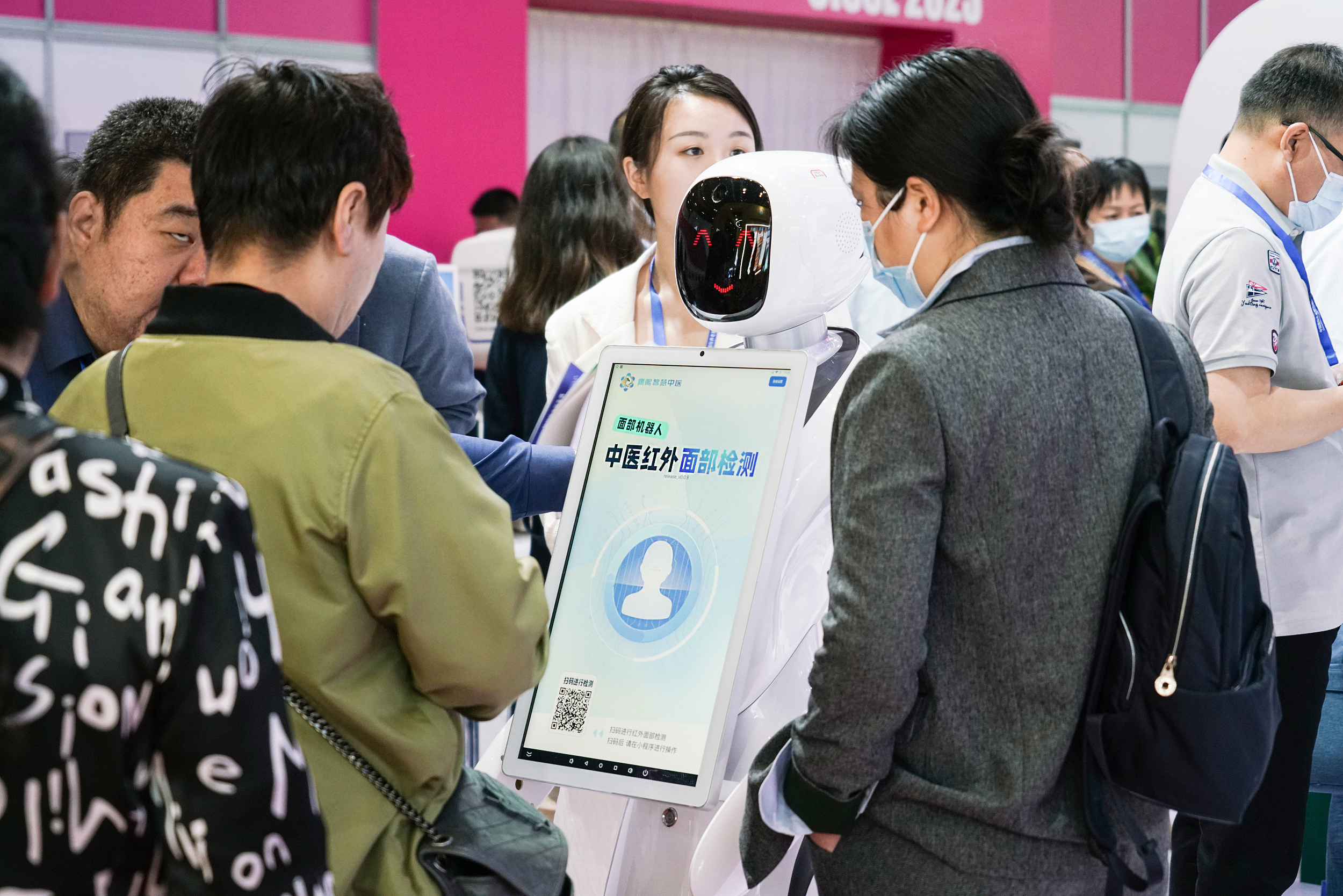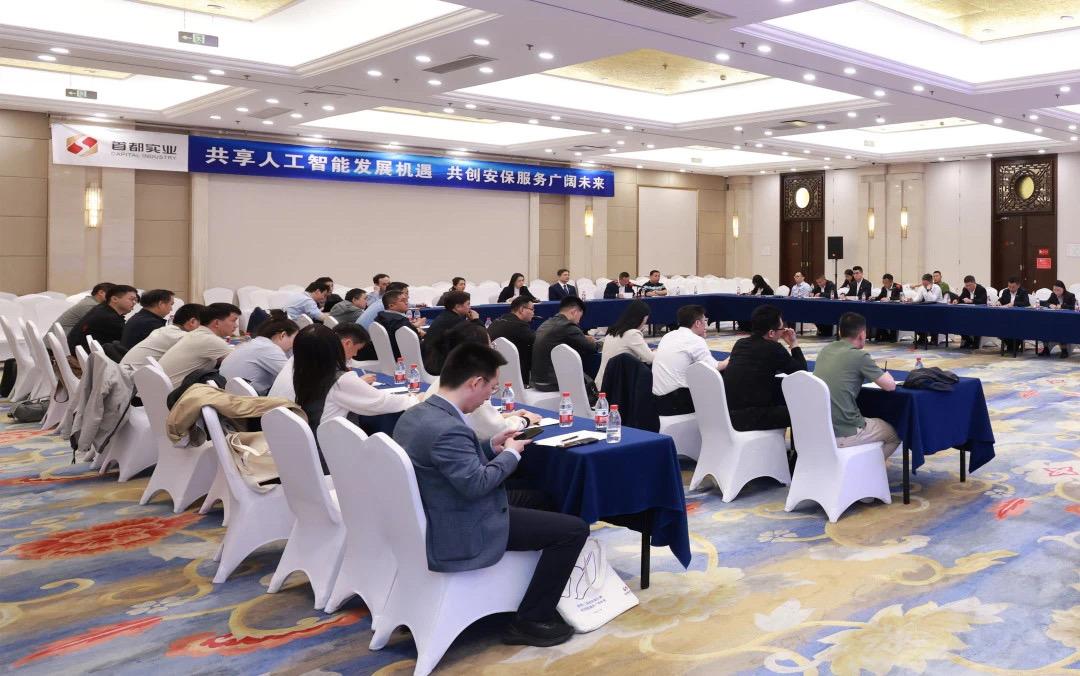Cutting-edge Technology Opens Up New Paths in Life Sciences

Visitors interact with the infrared TCM face detection robot at China International Elderly Care Service Expo, on May 5, 2023, Beijing. (PHOTO: VCG)
By ZHANG Jiaxing & ZHONG Jianli
"Traditional Chinese medicine (TCM) diagnosis usually relies on observation, listening, inquiry and taking the pulse but now, information technology has transformed diagnostic experience into objective and standardized TCM examination data," Zhang Boli, a renowned TCM doctor and academician of the Chinese Academy of Engineering, said.
These data not only serve as reference information for diagnosis and treatment by TCM doctors but also represent the modernization of the pharmaceutical principles of TCM, he added.
Zhang is one of the several experts Science and Technology Daily reporters recently interviewed to see how new technologies are revolutionizing life and healthcare.
Digitization enhances industrial breakthroughs
"TCM pharmaceutical principles are not outdated but TCM equipment lags behind, making it difficult to measure and control the quality of TCM." However, modern engineering equipment and technology has made real-time monitoring possible. Medicine components, previously difficult to monitor, can now be controlled online, thus enhancing the quality and production efficiency of TCM.
Zhang gave the example of the Haihe Laboratory of Tianjin University of TCM, which in collaboration with a research team from Zhejiang University, is applying AI technologies such as machine learning to model measurement data from hyperspectrum, Raman spectrum and near infrared spectrum, creating rapid analysis methods.
Wu Xiaoke, president of Heilongjiang Provincial Hospital, said digitalized, intelligent upgrade of medical equipment will drive disease prevention and control, health management, drug research and other areas to comprehensively improve quality and efficiency, providing powerful tools for high-quality development of the related industries.
New technologies expand into new fields
"With genetic testing technology, we now know of 300 to 600 pathogenic genes that are related to deafness," said Wang Qiuju, a professor at the Sixth Medical Center of the People's Liberation Army General Hospital. Genomic technology has discovered the "ghost" genes responsible for recurring deafness within families, Wang added.
"As a specialist in otolaryngology, I have witnessed China's steady progress in disease diagnosis and treatment for over 20 years," she said. The integration of disciplines such as audiology, genetics, imaging and data science has expanded new industrial paths from finding the source of diseases to preventing and treating them.
Zhang explained how personalized diagnosis and treatment can be created for patients by leveraging sensing technology, surface biometrics and other techniques. This will also improve treatment efficacy and safety, while using AI algorithms to analyze and diagnose medical images can enhance diagnostic accuracy and efficiency. China is developing large-scale AI models in the health sector, Zhang said.
Big data enable smart healthcare decision-making
Shifting the focus from treatment to healthcare is an essential mission in the future. As data elements accumulate and are mined, new ways of disease prediction and health maintenance are becoming possible.
"Combined with TCM smart wearable devices and big data analysis, the public can receive comprehensive health management services, including dietary advice and exercise guidance." Zhang said AI, by leveraging a large amount of medical data and its computing power, can even help predict the risk of disease occurrence, providing personalized health advice for individuals.
However, Wu Xiaoke added "Without sufficient data, the level and scope of AI application will be limited." "Isolation" of medical data still exists, with many data sets difficult to converge into big data. He suggests promoting medical data sharing and integration, allowing more data in the health field to flow smoothly.
"The rapid development of cutting-edge technologies such as synthetic biology is fueling industry transformation," noted Wang Qiuju, adding that setting up national mega-science projects and initiatives in life sciences is crucial to promote basic innovation in China.







